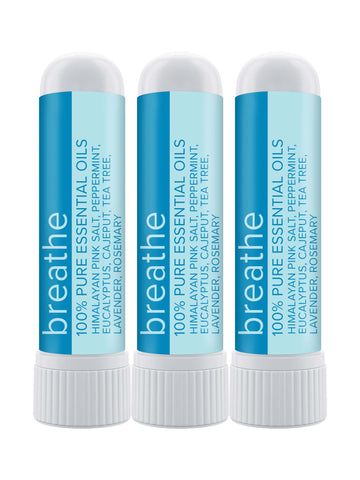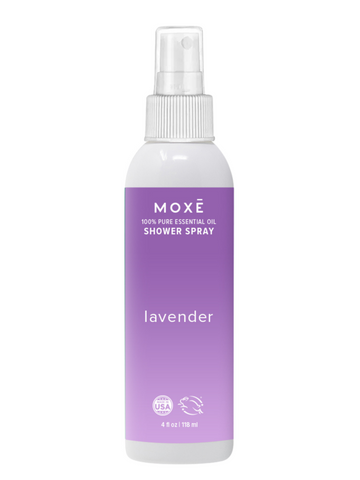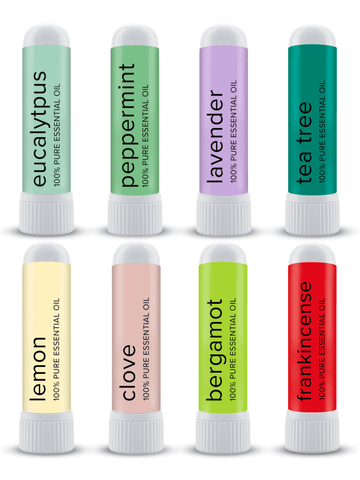
by
Aromatherapy is a broad, and constantly evolving field that is very different even a decade ago. As a beginner, the sheer amount of information can seem overwhelming. Whether its choosing your first oils, deciding how to use them, or even why aromatherapy is right for you, we wanted to simplify your entry into this amazing world.
Before we talk about the how, let's take a step back and talk about what aromatherapy can do for you. There are countless fantastical claims made by proponents of aromatherapy. Throughout your journey with aromatherapy you will encounter many of them. However, they are most dangerous when you're still new. We therefore urge you to take every claim you read about aromatherapy with a grain of salt, and evaluate the evidence presented independently.
Every experience is different!
Ultimately, your experience with aromatherapy will vary. No two experiences are the same, and what might give you a fantastic result may not work for others. In this way, aromatherapy is a process of trial and error, where you'll endeavor to find what works for you!
With that said, do not be discouraged! There is a growing body of scientific evidence that touts the benefits of aromatherapy, and hundreds of thousands - if not millions - of success stories.
Where to start really depends on what you're looking to get out of your aromatherapy experience, what your budget is, and if you have any health considerations to take into account.
A Beginner's Journey
When I personally started my aromatherapy journey, I was dealing with muscle aches and frequent headaches. I decided that I wanted to attempt a more natural remedy, and along with a shift in my diet and sleep habits, I figured I would try aromatherapy.
I settled on a meager budget of $35 dollars, considering I was at the time, a poor college student. After speaking with my doctor, who gave me the go ahead to experiment, I went for it.
The First Steps
The first step I would always recommend is to read EVERYTHING you can! I spent around 4 hours on a rainy Boston Saturday researching how I would attack this problem, and I ended up narrowing down the list of essential oils that I wanted to try.
Ready for me to contradict what I just said? At first, you're going to feel overwhelmed. There is so much information out there! What I learned - don't stress (unless you're looking to grab some Geranium or a MOXE Peace to counteract it) and just go for it! As mentioned earlier, every experience is going to be different so don't be afraid to experiment! It's completely normal to take several tries to get it right!
Once you have narrowed down your list of candidate oils, you'll need to make sure you order from a reputable supplier. Again, do your research! There are a number of less-than-reputable suppliers out there. When looking for a supplier, pay attention to these things in particular:
How to buy your essential oils
Does the supplier only give you a generic name (Like Lavender) or do they give you the full Latin name? You want to avoid companies that will only provide a generic name, because many companies are getting away with deliberately mislabeling their oils, which not only can lead to confusion, but can fail to deliver the desired effect when used. For example, there are several different varieties of Sandalwood and Geranium. Without knowing the Latin Name, you cannot discern the difference. You should also look for the company to provide as much background information as possible, including the country of origin and the method of extraction. All of these factors can influence the results you get from your essential oils.
Watch out for terms such as "nature identical", "perfume oil", "fragrance oil", "fragrance blend". At MOXE, we've seen a number of companies try to get away with this, and it's a key indicator that the vendor isn't knowledgeable about Aromatherapy, considering that these can range from blends of essential oils, to "synthetic oils" that are made in a lab, to just plain chemicals. You want to know what you are inhaling, so err on the side of caution and avoid these types of labels.
As previously mentioned, watch out for claims. Considering the holistic nature of aromatherapy, there are a broad range of claims being made about its use. We strongly advise you to watch out for any terms that imply "therapeutic grade" or the like. There is no uniform regulatory body for Aromatherapy, although the FDA has indicated in recent years that it will be keeping a closer eye on companies producing and selling essential oils.
Are the essential oils stored in dark, glass bottles? Considering that essential oils are volatile compounds that react to light, you'll want to see your oils packaged in dark brown glass. Aluminum containers for larger orders are also acceptable, but you'll want to make sure that the interior of the bottle is lined so no chemicals leech into the oil.
Be wary of vendors that sell their entire line for the same price. While this is not a tell tale giveaway, generally speaking there is a degree of variation between crops which influences the price. For instance, Geranium should always be cheaper than Jasmine, for instance.
Generally speaking, look for organic essential oils. We've found that in general, they tend to be of better quality.
If you're buying locally, or in a health food store, pay attention for signs of aging on the outside of the packaging. As essential oils age, they oxidize which diminishing the therapeutic properties as well as the fullness of the aroma. Again, this is why properly sealed glass bottles are important, as glass is an inert material and won't transfer oxygen to your essential oils.
Now, with all of that said, let's continue our journey. After educating myself on what not to buy, I ended up settling for Lavender! As far as Aromatherapy goes, Lavender is a great way to get your feet wet without spending too much of your hard earned dollars. I contacted a couple of different vendors, and ended up ordering a 10ml vial ofLavender vera which only set me back about $10.
"Not bad" I thought.
With $25 dollars left, I had to then decide how I was going to use my new Lavender vera oil. I went back to my earlier research on how to best use my new essential oil, and reviewed some of the methods available to me.
How to Use Your New Oils
There are a number of different approaches to using your essential oils, including (but certainly not limited to):
Aromatherapy massage with the primary oil(s) diluted in a carrier oil. Generally best with 15-20 drops of your given essential oil per 1oz of a carrier oil (I personally use almond oil). Gently massage all over the body.
Facial steaming with 5-6 drops of the primary oil(s) in a pint of warm water, or in a facial steamer. You can also do this with a hot towel, which I personally prefer.
Bathing with 5-10 drops of the primary oil(s) diluted in a tablespoon or so of honey, or mixed into a blend of Epsom salts.
For sinus problems, bring hot water to a steam and add 4-8 drops of your preferred essential oil. Place a towel, and your head over the bowl to create a tent. Close your eyes and inhale until you can no longer smell the essential oils. Try this every 4-6 hours.
Personal aromatherapy diffuser - but be careful. Pets can be sensitive to certain essential oils. For example, Peppermint Oil can irritate a cat's airways.
Aromatherapy compress: Add 4-8 drops of essential oil to a bowl of warm water. Gently swish the surface of the water with a cotton cloth. Once removed from the bowl, ring it out, and then apply where needed. This is great for spot treating sore muscles, and also an excellent way to treat menstrual cramps. I also found that covering the cloth with plastic wrap and then applying a heating pad on low worked wonders.
Pre-mixed, portable aromatherapy diffusers. Not the most customization option, but by far the easiest. Simply inhale through the mouth and out through the nose.
Carrier Oils
Generally, we recommend not applying "neat" or undiluted essential oils directly to the skin. Each of these methods relies on diluting the oil in some way, whether that is in water (even though essential oils are not water soluble), or in what's called a "carrier" oil.
Carrier oils like Almond oil, Coconut oil, and Olive oil are common. Carrier oils help to minimize the volatile nature of un-diluted essential oils, as they help hold in the therapeutic properties and prevent damage to your skin. Plus, carrier oils also have a myriad of benefits of their own!
That said, going back to my original goals of relieving my headaches, as well as soothing my aching muscles I decided to take a two pronged approach. I ended up doing twice weekly aromatherapy massage with 15 drops of Lavender vera into an ounce of Sweet Almond oil. For my headaches, I would use a facial steam of 6 drops in a spoonful of honey dissolved in warm water.
I found the massage to be tremendously effective, and my muscles remain ache free to this day, despite the punishing workouts they are subjected to on a near daily basis. The facial steam was less effective, though I suspect part of this was due to my choice in putting the Lavender in honey, prior to dissolving said honey into hot water.
When I tried again a second time, I used the oils directly in the hot water and had much better results, which again underscores the importance of experimenting to find out what works for you!
Reach out to us!
If you have any question about beginning your aromatherapy journey, please don't hesitate to reach out to us! You can reach out as help@bemoxe.com, and we're always available to answer your questions!
 Free Shipping within the Continental U.S.
Free Shipping within the Continental U.S.









